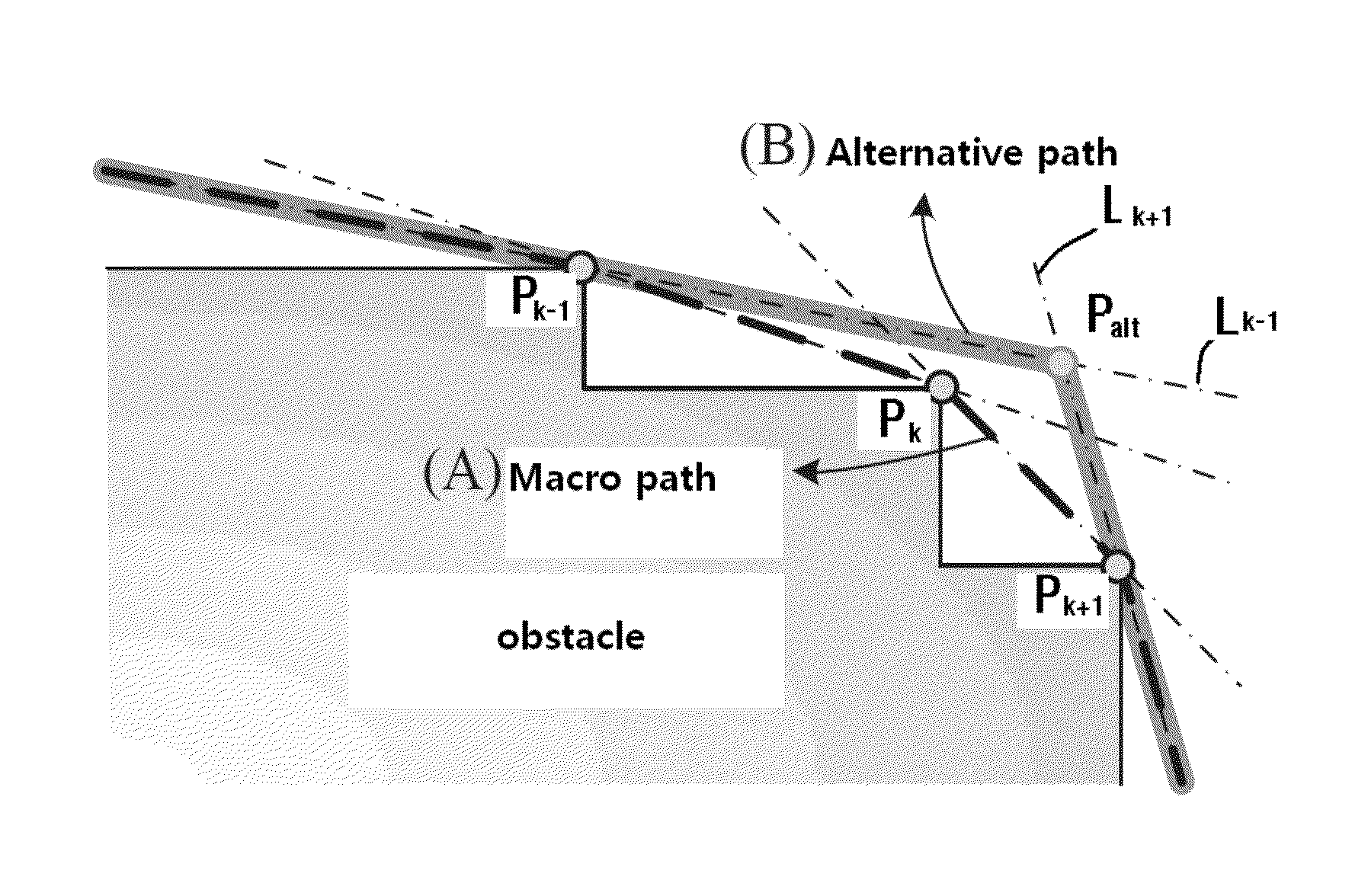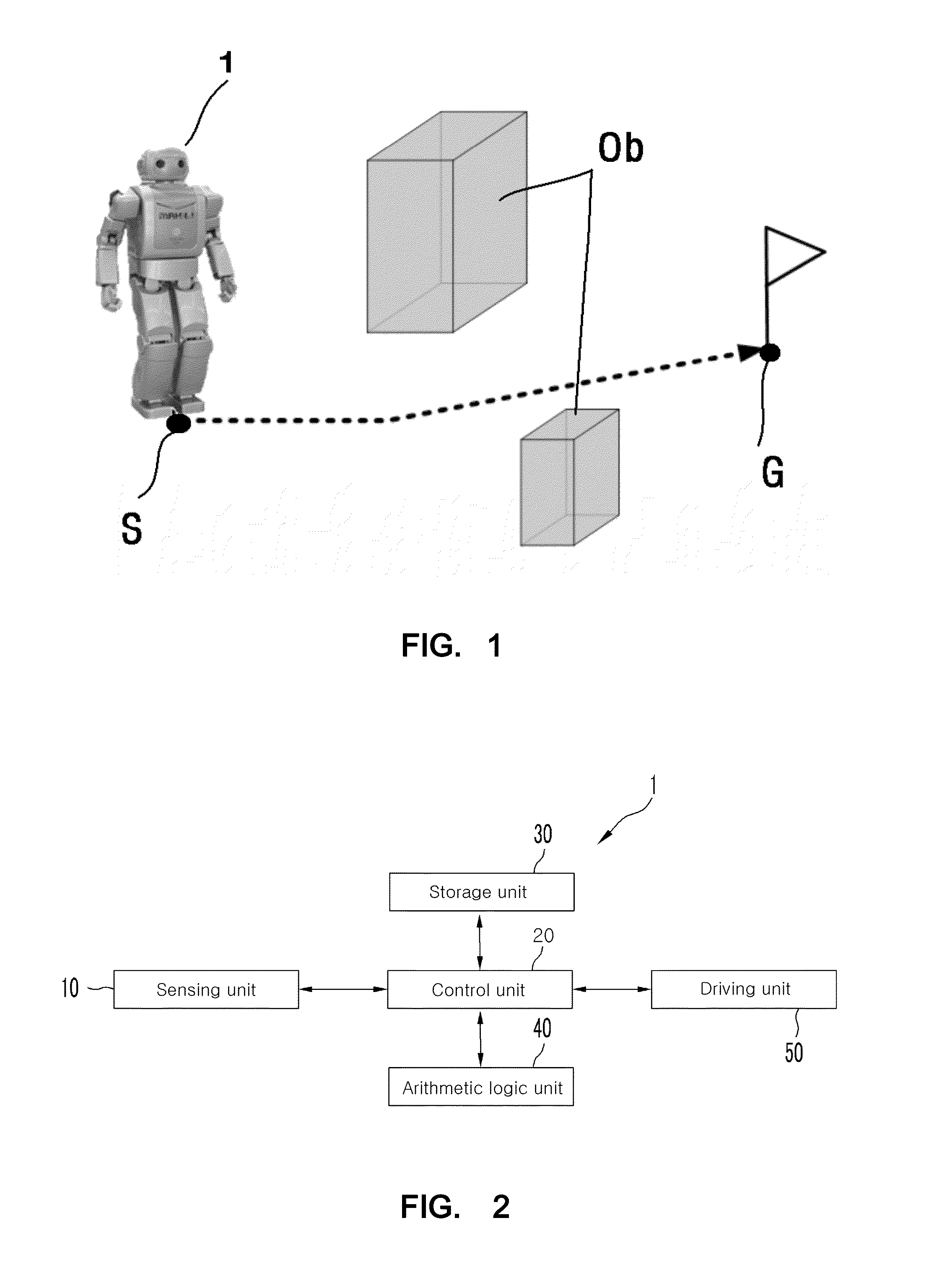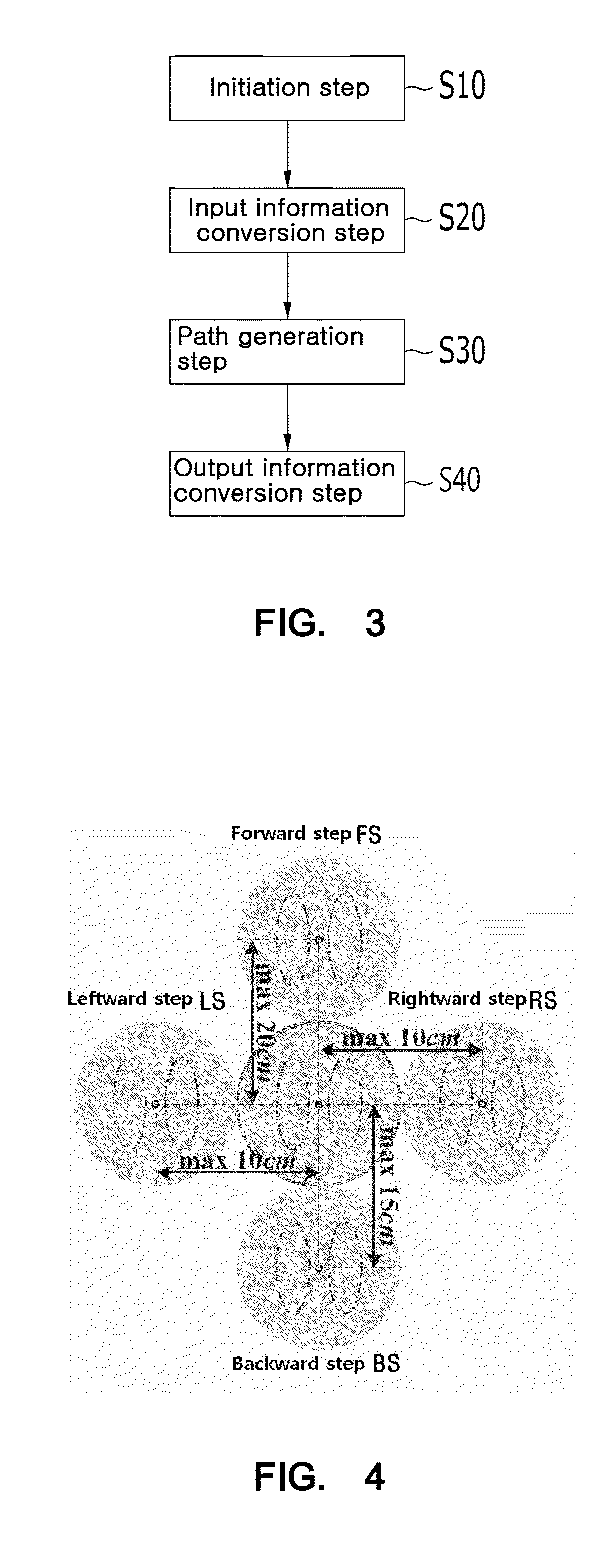Method for planning path for autonomous walking humanoid robot
a humanoid robot and path planning technology, applied in the direction of vehicle position/course/altitude control, process and machine control, instruments, etc., can solve the problems of difficult to apply the same path planning method as that applied to the mobile cleaning robot to the autonomous walking humanoid robot, and the path generated according to such a conventional manner is not natural, and it is not easy for such a path for the mobile robot to be tracked by a humanoid robot whose kinetics are complex
- Summary
- Abstract
- Description
- Claims
- Application Information
AI Technical Summary
Benefits of technology
Problems solved by technology
Method used
Image
Examples
Embodiment Construction
[0037]Hereinafter, a method for planning a path for an autonomous walking humanoid robot according to the present invention will be described in more detail with reference to the accompanying drawings.
[0038]The path planning method for an autonomous walking humanoid robot according to the present invention includes an initialization step, an input information conversion step, a path generation step, and an output information conversion step. The autonomous walking humanoid robot 1 includes a sensing unit 10, a control unit 20, a storage unit 30, an arithmetic logical unit 40, and a driving unit 50. The sensing unit 10 includes a laser distance sensor and a position recognition sensor, which serve to acquire environmental information. The laser distance sensor (e.g. laser range finder) acquires the environmental information on an obstacle of a surrounding environment through a laser that irradiates a laser beam, and the position recognition sensor such as a Stargazer acquires the env...
PUM
 Login to View More
Login to View More Abstract
Description
Claims
Application Information
 Login to View More
Login to View More - R&D
- Intellectual Property
- Life Sciences
- Materials
- Tech Scout
- Unparalleled Data Quality
- Higher Quality Content
- 60% Fewer Hallucinations
Browse by: Latest US Patents, China's latest patents, Technical Efficacy Thesaurus, Application Domain, Technology Topic, Popular Technical Reports.
© 2025 PatSnap. All rights reserved.Legal|Privacy policy|Modern Slavery Act Transparency Statement|Sitemap|About US| Contact US: help@patsnap.com



